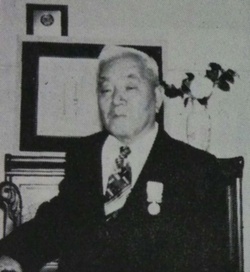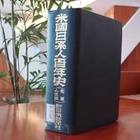This series, which has been re-reading "The Centennial History of Japanese Americans," a compilation of the footsteps of first-generation immigrants to America, starting with Northern California and going almost state by state, has finally reached its final installment. The 27th chapter of the Centennial History is "The Southern Coastal States," which refers to Louisiana, Mississippi, and Alabama.
Centered on the port city of New Orleans
According to statistics, the Japanese population in Louisiana was 17 in 1900, rising to 31, 57, 52, and 46 in each of the following decades, before reaching 127 in 1950 and 519 in 1960 after the war.
When the World's Fair was held in New Orleans, a thriving port city in Louisiana, in 1884, Dr. Jokichi Takamine and others were sent by the Japanese government and stayed there for about a year. It is unclear when the Japanese settled there, but it is said that some Japanese ran lodgings for sailors, Western-style restaurants, shrimp shops and bamboo craft shops.
Hinata Tomomatsu, originally from Aizu, Fukushima Prefecture, arrived in New York in 1904 and then came to New Orleans to open a Japanese art store. The number of Japanese shrimp fishermen also increased to a dozen or so, and they continued fishing until the outbreak of war between Japan and the United States, but were detained and their fishing activities were interrupted when the war began.
From around 1912, some people came to this area in search of a new life due to the Japanese Exclusion Law in California and started farming, but most of them left within two or three years.
The Japanese Consulate in New Orleans opened in 1922, with Hyuga Tomematsu as its acting manager. Just before the outbreak of war, Hyuga's art store was the only Japanese business there. A considerable number of Japanese ships came and went, loading cotton and soybeans and unloading miscellaneous goods from Japan. Furthermore, general sentiment towards the Japanese during the war was not particularly bad. During and after the war, immigrants from other states put down roots here as well. After the war, the consulate reopened in 1952, trade began again, and Japanese ships began coming and going.
Outside of New Orleans, "about 100 military brides lived in the nearby Roy Johnson Barracks, and organized a social gathering called the 'Sumire-kai.'" There were Japanese who ran landscaping businesses in the capital, Baton Rouge, and photo studios in Alexandria.
One of the states with the fewest Japanese residents
The first Japanese people to appear in Mississippi statistics were two in 1910, none in 1920, one in 1930, and one in 1940. After the war, the number increased sharply to 62 in 1950 and 178 in 1960.
The Centennial History also states that "It was the state with the fewest Japanese people of all the states in the United States." Little is known about its prewar history. The increase in population after the war was due in part to women who married military men, and in part to the fact that chicken farming was popular in the state throughout the year, and it is believed that around 20 families of second-generation Japanese sexers lived in the state.
There were George Yano and three other families in Heijden, four families in Jackson, and three families in Greenwood, but their actual circumstances were unknown.
Thriving on Satsuma Oranges
According to statistics, there were three Japanese Americans in Alabama in 1900, and in each of the following decades the number rose to four, 18, 25, and 21. After the war, there were 88 Japanese Americans in 1950 and 500 in 1960.
In Alabama, the Japanese mandarin orange has long been known as the Satsuma orange, and the Japanese camellia has also become famous. The first Japanese person to settle in the state was Kosaku Sawada (from Osaka Prefecture), who ran a nursery in Mobile.
Sawada, who ran a nursery in neighboring Texas, is said to have been the first Japanese person to enter Alabama in 1910 when he resold several thousand Japanese mandarin seedlings to a company in Mobile and traveled there to teach people how to plant them. He later developed a nursery in the state.
At one time, Nishihara Seito, who ran a mandarin orange nursery while farming rice in Texas, also opened a nursery southwest of Mobile and appointed Kiyono Shu (from Osaka Prefecture) as the director, but Nishihara eventually retired from the nursery and Kiyono took over.
Sawada opened a retail store for various types of plants and ran a successful business. After the war, he was regularly selected as a judge for the All-American Camellia Exhibition. Sawada's achievements were also introduced in Japan. He became especially famous for successfully cultivating a camellia variety called "Mrs. Sawada" to permanently commemorate his late wife.
He created new species of camellia and sasanqua, and after some refinement he was able to successfully grow cherry blossoms, which were previously thought to be unable to grow in Alabama.
"We now sell several thousand cherry blossoms each year throughout the southern states, and Japanese cherry blossoms are now blooming everywhere, helping to promote a climate of friendship between the United States and Japan through flowers."
Tsubaki King
Much is written about Kiyono's life and achievements. He was so well-known that he was even featured in Life magazine as the "American Camellia King" before the war.
Kiyono was born in Okayama City in 1888 as the second son of the director of Okayama Prefectural Hospital. After graduating from Kishiwada Middle School in Osaka, he received $50,000 (in the money of the time) from his father and traveled alone to the United States, Texas, where he devoted himself to studying the language and agriculture in the Houston area and planted Japanese mandarin oranges, known as Satsuma oranges.
However, the seedlings were in danger of being wiped out by frost damage and were hit by heavy rainstorms. Despite these hardships, they managed to successfully cultivate seedlings of camellias and azaleas, which were said to be difficult to propagate, and to develop new varieties. Demand increased after World War I, and by the 1930s, the 200-acre farm was shipping 3 million seedlings a year to all states in North America.
Thanks to his achievements, the city of Mobile became known as the "Azalea Capital" and an Azalea Festival is held every year.
However, having visited Japan shortly before the outbreak of war between Japan and the United States, Kiyono was prevented from returning home and his assets were confiscated. After the war, he returned to the United States in 1946 and worked at a nursery. The matter of his assets that had been confiscated during the war remained stalled, but he received a refund of $250,000 in excess taxes owed during his wartime absence, and in 1952 he returned to Japan, set up a residence in Tokyo, where he also became active in the Japanese horticultural community.
* * * * *
This concludes our look at the footprints of Japanese people in America, which we have introduced almost state by state based on the "Centennial History."
While re-reading "The Centennial History," I was reminded once again of how many Japanese people came to America more than 100 years ago and tried to build their own frontiers all over the U.S. It is amazing to think that Japanese people had left their mark everywhere in America when the country was still a blank map.
I would also like to pay tribute to the achievements of editor Shinichi Kato and others who covered these footsteps across the United States around 1960. Now that more than half a century has passed since the book was published, I hope that a sequel will be published at some point that summarizes what happened to the Japanese and Japanese-Americans who appeared in the book.
(Note: I have used the original text as much as possible, but have made some edits. Titles have been omitted.)
© 2015 Ryusuke Kawai








